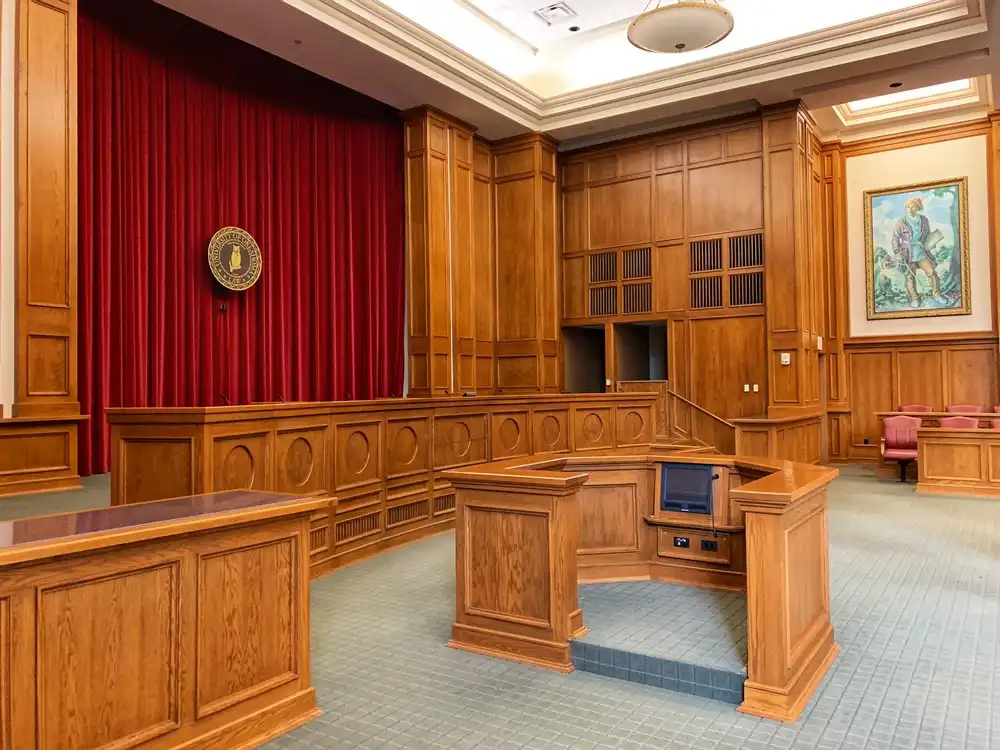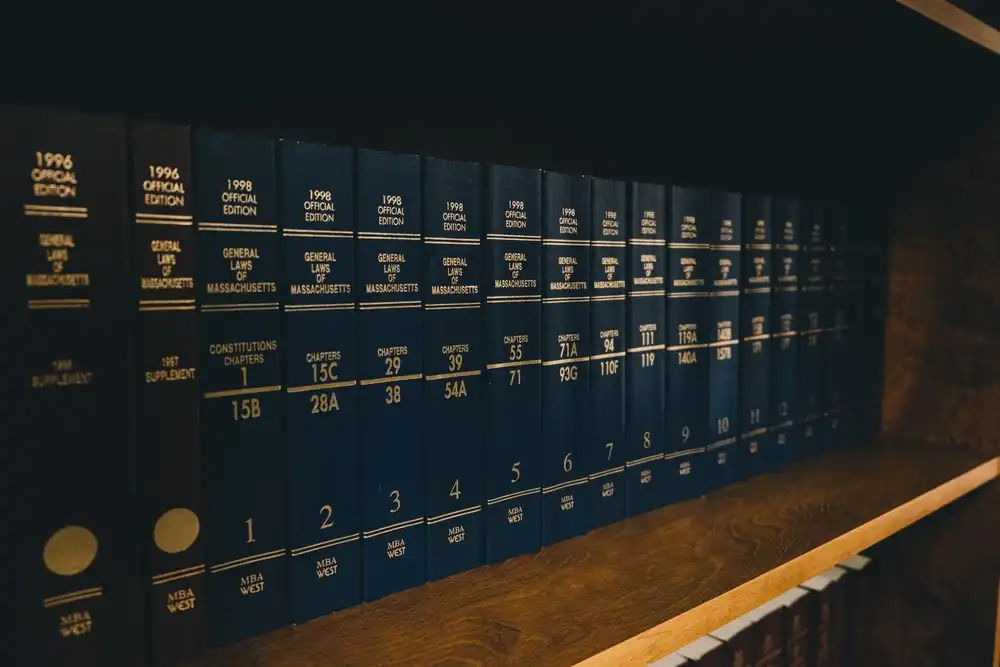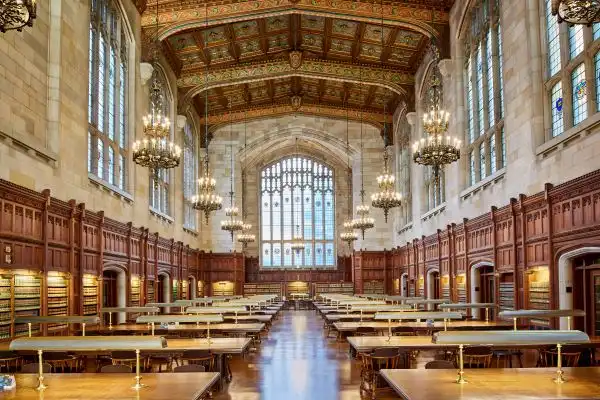Law School Quality Indicators - How are they intertwined?
The law school admission is quite different from admission to a typical college. First, most law schools require more items, such as undergraduate GPA, letters of recommendations, personal statement, and essays. Additionally, because law schools admit relatively small numbers of students, competition for law school admission is fierce due to low acceptance rates and high LSAT scores.
In addition to the common requirements, there are several quality indicators for law school admission - acceptance rate, LSAT score, tuition & fees, and school size.
In this article, we seek to identify the correlation between these indicators using admission information for the 2024 school year.
Correlation between Acceptance Rate and LSAT
It is obvious and easy to answer the question of whether there is a relationship between acceptance rate and LSAT score. Like typical college admission, even in any kind of competition, law schools with low acceptance rates tend to have high LSAT scores.
In 2024, 4 law schools had a very low acceptance rate, lower than 10%, and the average LSAT score for these colleges was 174, which is a very high score. Law schools with acceptance rates of 10-20%, which are also lower rates, had a high LSAT score of 170. [Acceptance Rate Range]
Conversely, the LSAT score of law schools with an acceptance rate around 50% was 154 and with an acceptance rate of 70% or higher, the LSAT score was 153.
The below chart visualizes acceptance rates and LSAT scores of ABA-accredited law schools. Scattered points are pairs of acceptance rate and LSAT score for each law school. The red line chart shows the LSAT averages by acceptance rate ranges.
As you can see in the chart, acceptance rate and LSAT score are inversely related. That is, law schools with low acceptance rates tend to have high LSAT scores.
Correlation between Acceptance Rate and Tuition & fees
Schools with competitive admission are typically ranked high, so you can assume them to charge higher tuition. In this section, we will analyze law schools' admission and tuition information for 2024 to see whether this assumption is correct.
In 2024, the average tuition & fee of law schools with very low acceptance rate lower than 10% was $76,427, which is very expensive. Law schools with acceptance rates of 10% to 20% also had high tuition of 66,754. [Tuition Range]
On the other hand, the tuition at law schools with an acceptance rate around 50% was 47,322 and with an acceptance rate of 70% or higher, the tuition & fees was 48,699.
The below chart visualizes law school acceptance rates and tuition & fees for the school year 2024. As you can see in the chart, law schools with acceptance rates under 30% have expensive amount of tuition. However, it can be seen that the tuition of schools with an acceptance rate of 30% or higher is similar and is not affected by the acceptance rate.
This shows that the assumption that law schools with low acceptance rates are expensive is partially correct. Although we can only say that lower acceptance rates mean higher tuition for schools with lower acceptance rates, we cannot adopt this assumption for all law schools.
Correlation between LSAT and Tuition & fees
Since we have already looked at the correlation between acceptance rate and LSAT score, and the correlation between acceptance rate and tuition, we can easily predict the correlation between LSAT score and tuition. In other words, you can predict that law schools with higher LSAT scores will charge higher tuition.
In 2024, the average tuition & fee of law schools with very high LSAT score over 170 was $74,281, which is very expensive. Law schools with LSAT scores between 165 and 170 also had high tuition of 55,469. [LSAT score Range]
On the other hand, the tuition at law schools with LSAT score around 155 was 46,951 and with LSAT score of 150 or below, the tuition & fees was 16,803.
The below chart visualizes LSA score and tuition & fees for the school year 2024. As you can see in the chart, you can find a rule that law schools with higher LSAT scores have higher tuition. Unlike the correlation between acceptance rate and tuition, this rule can apply to any range of LSAT scores. Therefore, the higher your LSAT score, the higher your tuition will be.
Correlation between Enrollment and Admission Competitiveness
It is believed that the correlation between the number of law school students and LSAT scores and/or acceptance rate is not very significant. It is generally believed that high scores and tight admission are required to enter a school or institution that selects a small number of students, but this is not necessarily true.
In this section, we will check whether there is any correlation between the two indicators based on 2024 admission data.
Are student population and LSAT scores correlated?
In 2024, the average student population of law schools with a very high LSAT score over 170 was 1,239, which is larger than average law school population 714. The average population at law schools with LSAT score of 150 or below was 542.[Enrollment Range]
Additionally, as you can see in the chart below, law schools with larger student populations have higher LSAT scores. This becomes clear when we exclude two schools (Georgetown Law and Arizona Law) with more than 2,500 students.
Therefore, we can define the correlation between the two as law schools with more students have higher LSAT scores. Predicting the reason, it can be said that the size of the parent institution, the quality of education, and the history of law schools had an influence.
Are student population and Acceptance rate correlated?
As we have already seen, LSAT scores and acceptance rates are inversely proportional. Therefore, since LSAT scores and the number of students are related, it appears that the acceptance rate and the number of students will also be related. In other words, it is reasonable to predict that law schools with more students will have lower acceptance rates.
The chart below shows that this prediction was not wrong. Excluding Georgetown Law and Arizona law, which have over 2,500 students, it becomes clear that the two indicators are almost exactly inversely proportional.
Are student population and tuition correlated?
Then, what is the relationship between tuition and number of students? Since there are correlations between tuition, acceptance rate, and LSAT score, it seems that tuition and student population are also related in some way.
The chart below shows the relationship between tuition and the number of students. Note again that the two schools with particularly large student populations make the right side of the chart an unique shape. Like the relationship between student population and LSAT scores, law schools with a large number of students have higher tuition than law schools with a smaller number of students.
Correlation Between History and Other Law School Indicators
The last indicator to look at is the history of the law school. Many law schools have a long history, having been established before 1900, and they are ranked high in law school rankings. Therefore, the school's founding year may also be related to other law school indicators, such as LSAT scores.
Will it be more difficult to get into law schools with a long history?
From the results, the longer the history, the more competitive the admission, for the law schools that established before 1930. That is, old law schools had lower acceptance rates and higher LSAT scores. However, for law schools established after that, there seemed to be no correlation between the year of establishment and other indicators.
As you can see in the chart below, the acceptance rates and LSAT scores of recently established law schools are not significantly different from those of law schools established in the 1950s. Rather, the acceptance rate of law schools established after 2000 was found to be lower than that of law schools established in the early 1900s.
Is there a relationship between law school history and tuition?
Although it is difficult to infer the relationship between law school history and tuition, it can be predicted to some extent by recalling the correlation between the admission indicators and law school history discussed in the previous paragraph.
As you can see in the table below, although the trend has slowed down in recent decades, law schools with a longer history have more expensive tuition. In particular, tuition at schools established before the early 1900s is considerably more expensive than tuition at other law schools.
However, as can be seen from the scattered dots in the chart, the difference in tuition is large regardless of the year the school was opened, making it impossible to determine a correlation between the history of law schools and tuition.
Bottom line
In this article, we examined the correlation between law school indicators based on 2024 law school data. Although there is a deviation from the average value and may change over time, the following correlation was found for the academic year 2023-2024.
- The acceptance rate and LSAT score are inversely proportional, so the lower the acceptance rate, the higher the LSAT score.
- The lower the acceptance rate, the higher the tuition, but the deviation is large.
- Law schools with higher LSAT scores in admission tend to have higher tuition.
- Law schools with larger student populations have more competitive admissions (lower acceptance rate and higher LSAT score).
- Tuition at law schools with a large number of students is more expensive than at law schools with fewer students.
- It is difficult to say that there is a clear correlation between law school history and Law School admissions indicators. However, law schools established before 1900 have competitive admissions and relatively high tuition.












